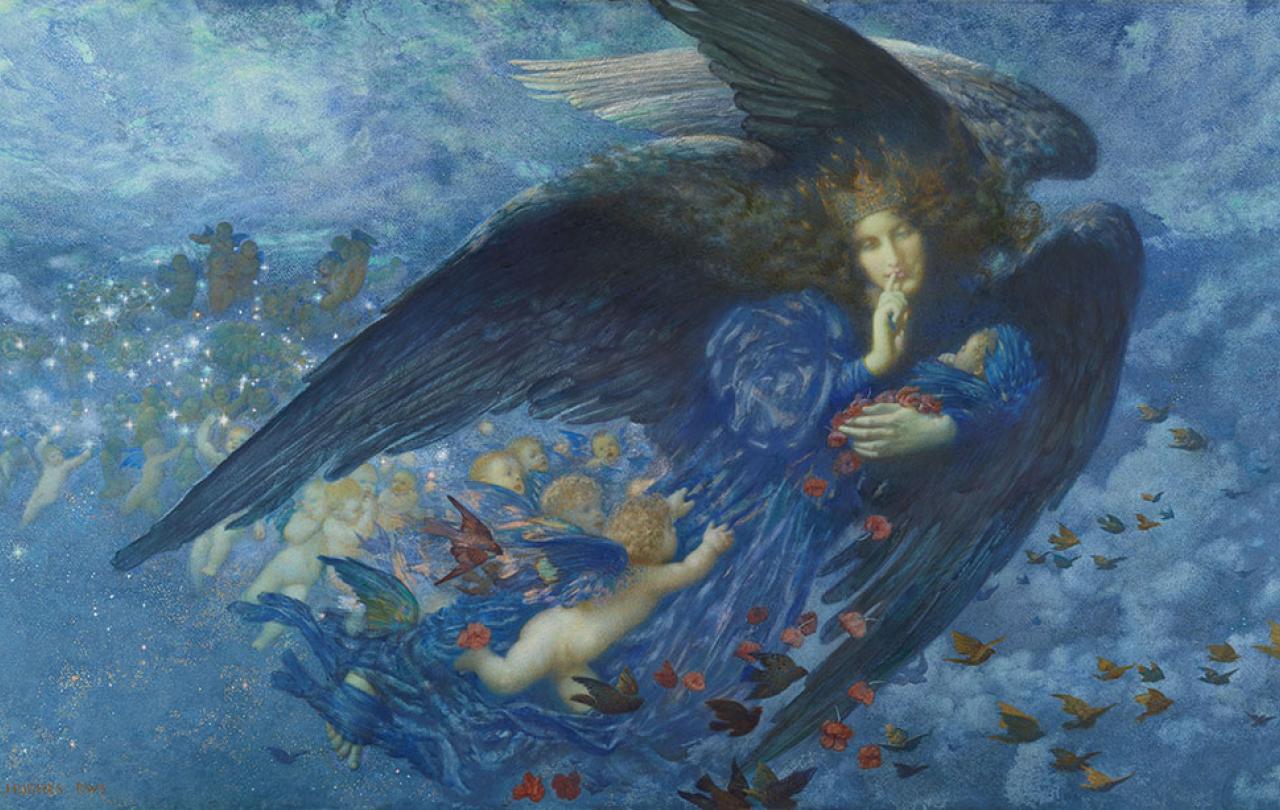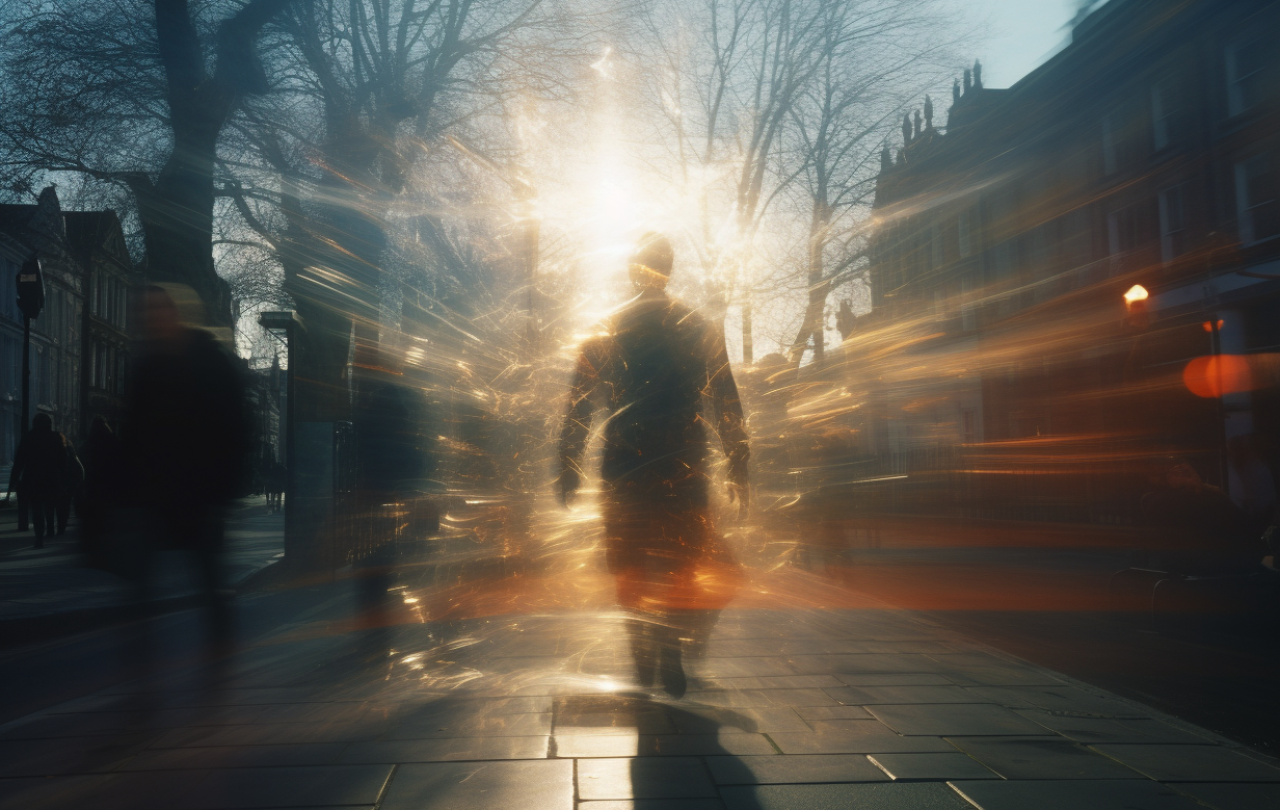
This summer I got to interview Frank Skinner; comedy-legend-come-football-anthem-maestro. The whole interview was a lot of fun, but the final six minutes were my favourite. They’re the reason this article exists.
Frank, who is the host of Frank Skinner’s Poetry Podcast and carries a pocket-sized book of poetry with him wherever he goes, spoke about the "super-poetry" of Jesus.
If you haven’t listened to it yet, do. Frank is incredibly worth an hour of your time.
But, for now, allow me to summarise his thoughts:
"Christianity is like living the poem… it’s like the Old Testament was a collection of poetry, I’m not saying that there’s no factual stuff within it, but clearly it’s written in a poetic style, with great truths and insights into human nature. And then, with that whole phrase, “The Word became flesh”, it’s like now the poetry gets real, there’s going to be a poem that lives, and it’s all going to make sense… this is super-poetry, this is poetry that’s actually physical, it actually exists."
Frank goes on to suggest that we’ve lost sight of this, that humanity have forgotten, or perhaps never fully grasped, that we exist because of this super-poetry, that we exist within it, that ‘there’s a line waiting just for us’. And then he turned to me and Justin (my co-host) and said,
"Here’s your mission, should you choose to accept it, go and sort that out."
So, here I am. Sorting that out… Kind of. That’s a lot of pressure, Frank.
The Word became flesh
The ‘phrase’ to which Frank is referring, the one which turns poetry into super-poetry, can be found in the Prologue of John’s Gospel. And it is a theological juggernaut of a chapter – mind-bendingly complex and eye-wateringly dense – it is arguably one of the most influential chunks of the entire bible. So, a nice and easy place to start.
The Word became flesh and made his dwelling among us.
That’s the incarnation summed up in ten words. It’s ironic that it would take ten-million words to fully unpack the depth of them, isn’t it? Gosh. John’s such a genius.
The Word - that’s Jesus – who, as the Prologue goes on to state, is the Son of God, the very source of life itself, and the light of the world. He was present since the beginning, preceding and partaking in the creation of the universe. He, the Word – Jesus - became flesh, and moved into the neighbourhood. And in so doing, he bound together centuries worth of prophecies, predictions, expectations and hopes. The maker squeezed himself into the confines of the made; it is, without a doubt, one of the most outrageous claims that Christianity makes.
The Word has an accent.
The Word gets tired.
The Word burns the roof of his mouth on his food.
And yet, still God. Always God. The Word of God, with a name and a birthday and a bedtime. Wherever you fall on the whole ‘believing it’ scale, you have to admit, it’s pretty astonishing. It is a cosmic-sized plot-twist.
But what if one were to assume that this really happened? If one were to believe that a God who transcends time, space and matter actually made a physical appearance in human history, as Frank Skinner does, then it changes everything. Such a belief leaves nothing untouched, it is utterly un-containable.
The poem became flesh
And that’s why I think that Frank’s poetry analogy is so genius. Let’s follow his train of thought for a moment, shall we?
Poetry has a tendency to dodge and disobey definitions at any given opportunity. It is, in its very essence, defiant. In fact, poetry’s unwillingness to sit contentedly in any given definition might be the only way in which it can be defined. And yet, despite very few of us feeling confident in our own abilities to define or explain the inner workings of poetry (perhaps we can leave such a task to Frank and his podcast), we all know it when we see it.
It would, I suppose, be rather poetic of me to suggest that there’s something innate going on there. To wonder whether there’s a capacity woven into us, a capacity to feel poetry to a degree that we could never understand it. I think this to be true even if our only exposure to it is through the snippets that have leaked through the cracks, the phrases that have escaped their literary confines and snuck their way into popular culture. And perhaps therein lies its power; we are able to spot poetry and somehow know that it is wanting access to parts of us that move through, but ultimately beyond, the cognitive. And then I suppose we decide whether we shall let it.
Poetry, at least the good kind, describes the indescribable, explains the unexplainable and identifies the unidentifiable. We can feel that it is making profound sense of us, even if we haven’t made sense of it. I haven’t worked out how it does that; if I had, I’d be putting such knowledge to good (and profitable) use. But there are incredibly deep insights beneath each word chosen in poetry, there are ‘ah-ha’ moments waiting to be stumbled upon, there are echoes of our own feelings – our fears, our longings, our hopes and our struggles – encapsulated in each stanza. Our choice is whether we’ll give it the time to shows us such. And if/when it does, will we trust it? Will we pay attention to our strangely warmed heart? (to borrow a phrase – many thanks John Wesley)
The truth that poetry is seeking to tell cannot be wholly proved by whether or not we can expound it with words or measure it with reason. The whole point is that it cannot be contained in such a manner. The truth of it can be more aptly identified in the odd resonance that we can no more deny than we can explain, it is in the familiarity that we find in brand new sentiments, it is in the ache that binds us to the words. It is in those places that the truth of poetry is most keenly felt.
And that is the case with the Christian faith, the epic story of the made and their Maker, the ultimate poem of the cosmos. And so, the story of Christmas, the enchantment of the Incarnation, and the beauty of Jesus is that the poet became the poem.
The Poem with an accent.
The Poem who gets tired.
The Poem who burns the roof of his mouth on his food.
Jesus is the super-poetry that I live and breathe, he is the poem to which I can belong. I can’t make sense of the incarnation, but I know that it makes sense of me. The intricacies of that poem can be debated, they can be observed, they can be weighed up – I’m not opposed to putting the Incarnation under the microscope – I’m just opposed to that being the only means by which we assess its truth. Rather, I would suggest that its truth can be more keenly felt in the places that poetry is designed to be felt – the deepest ones. Just as we have an oddly innate capacity for poetry, I believe us to have an innate capacity for Jesus.
The Poem became flesh, and he dwells among us. You know what, that is pretty insightful. Bravo, Frank.





